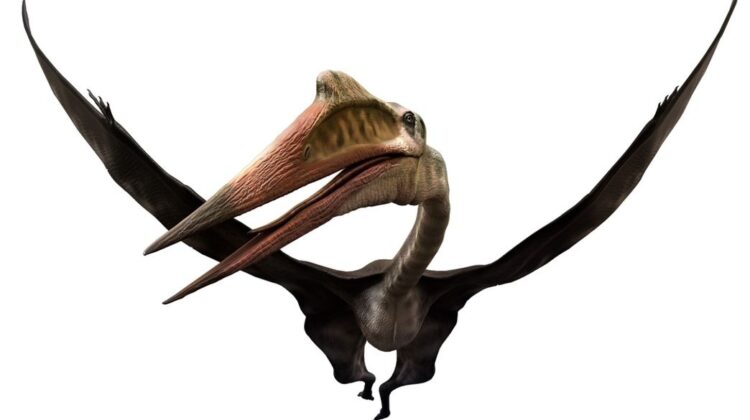
In the Nemegt Formation of the Gobi Desert, a massive pterosaur has been found. According to experts publishing in the Journal of Vertebrate Paleontology, the enormous, dragon-like monster would have lived and died 70 million years ago and likely had a wingspan of 10 to 12 meters (32 to 39 feet). To put that in perspective, consider that its wingspan is more than a three-story building’s height.
The animal belongs to the family of pterosaurs called Azhdarchidae, which lived in the late Cretaceous era. It’s common to confuse pterosaurs for dinosaurs, including the pterodactyl. Pterosaurs are truly flying reptiles, not birds, a class of dinosaur.
The arid interior region of what is now Mongolia is where this specific species would have been discovered. It could move on all fours despite having wings, and it most likely followed its prey—likely young dinosaurs—on the ground.
In the western Gobi, in a place named Gurilin Tsav, five pieces of the animal’s neck bones were found by palaeontologists in 2006. These pterosaur fossils are a remarkable find in an area that is well renowned for being a fossil treasure trove. In the past, huge pterosaur species’ bones have been discovered in North America and Europe. These remnants are evidence that they existed throughout Asia as well.
The latest discovery is thought to be one of the biggest pterosaurs ever discovered, rivaling the size of its cousins the Quetzalcoatlus (found in Texas) and Hatzegopteryx (found in Romania), according to the experts. The estimated wingspan of these creatures was 10 to 12 meters. They are believed to have been as tall as giraffes in terms of height (roughly 5.5 meters or 18 feet).
The problem is that palaeontologists only have fragmentary remnants, which makes it challenging to precisely estimate the creature’s size and shape. It’s possible that researchers exaggerated the size of the neck bones since they are abnormally thick in comparison to the rest of the body. It’s also possible that this specific specimen is either smaller or larger than typical for its species.
Unfortunately, pterosaur fossils are frequently incomplete and poorly preserved since their bones were not as robust as dinosaurs’.
Because the remains are so fragmentary, the researchers have not yet assigned a name to the new species or even concluded if one has been discovered. The discovery does, however, demonstrate for the first time the presence of enormous pterosaurs in the Asian skies.

Leave a Reply